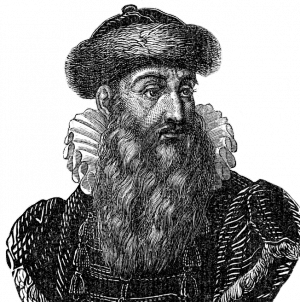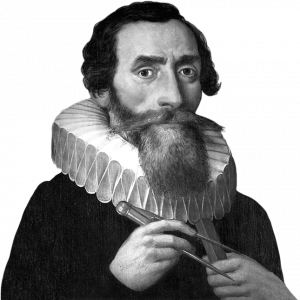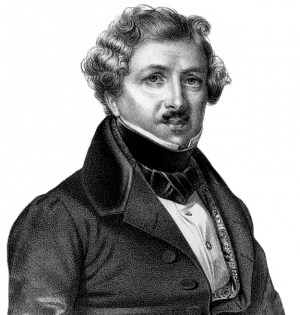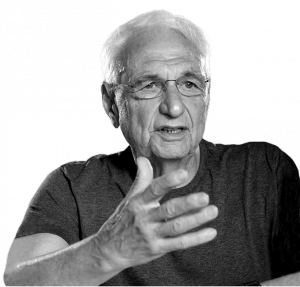938
6 historical figures, proving that even you can become a great man
The genius lives in kazhdomVsemirnaya history goes back thousands of geniuses who were able to change the world. It is strange that so few of them, because with the birth of a potential genius resides in each of us.
Johannes Gutenberg (1398 - 1468)
on the historical border between the menacing growl of Neanderthals and modern digital communications was only one person. 600 years ago, he was able to turn the course of world history is not picking up any weapons or royal scepter.
Father of 15-year-old Johann Geyntsfleysha wanted only the best for his son - a child taught the craft jeweler and fussed about a career in the Royal Mint. But the process of melting the silver quick-witted young man brought an entirely different idea: why not cast from the molten metal font and use it to print books? Have coins are all opportunities to make a revolution in the minds and hearts? For the sake of the idea of freedom-loving son-fix challenged family: disobeyed his father and renounced his name, changing its name to the family estate.
Johannes Gutenberg began life with a clean slate, in every sense of the word. I went to Strasbourg, where he took a large sum of money to organize the first printing press. The first work was the Gutenberg Bible in Latin. But to know the sweet taste of triumph at the first attempt failed. He failed to timely repay the debt, and its printing press was transferred to the court for the creditor, who amassed her good fortune. In Guttenberg could take the company, but not the dream. Busted engineer started from scratch, has opened a new tiny publishing and remained in history as the main promoter of knowledge. Modern startups nervously smoking in aside.
Johannes Kepler (1571 - 1630)
How to believe in themselves and in large letters to write his name in history, when your whole life pursuing the death and disease, and in your future success does not believe even his own family? "I prefer strong criticism of an intelligent man than the thoughtless approval of the masses" - the vital principle of the great astronomer who helped him sober look at life, do not curry favor with the crowd and move confidently towards its goal (read - to the stars) in spite of everything.
A boy from a poor family was often sick, unfit for physical labor, and was recognized as the most worthless son. Attacks by parents and peers did not break the spirit of the future scientist - his keen, curious and sensitive gaze was always turned to the sky, which became his outlet. When Kepler has already become an astronomer, his wife died suddenly, leaving him with two young children. At the same time his mother was accused of witchcraft, and the chief patron - Rudolf II - was removed from the throne. Nobody gave Kepler job.
In 1618 it began "Thirty Years War", and with it - hunger and wandering. Fate is ill-disposed to the winners of the passionate, and geniuses in their field, but only those who are able to go to her defiance remain in centuries. The main consolation for Johannes Kepler were always open it. The difficulty is not only not prevented, but seemed to have spurred scientists to formulate the basic laws of motion of the planets in their orbits, to explain the origin tidal pull of the moon, arrogantly assume that the Earth moves around the Sun and forever remain the most prominent figure in the scientific revolution of the 17th century. It's just some space!
Dries Baron von Zauerbronn (1785 - 1851)
For several centuries the authorship of this sensational invention, challenged hundreds of people on the planet. And the bet to him. The man on the spot who dreamed of getting each inventor - the creator of the bicycle, Karl Friedrich Christian Ludwig von Dries von Zauerbronn.
He held the title of nobleman, was friends with the royal ministers and enjoyed great popularity among women. But the only thing that kept Charles rest - a foot! During walks in the forests of the German Baron appeared crazy idea - to create a machine with which the "on foot", you can move with the speed of the rider. Forgetting about food and sleep, day after day, in a dark, cold, close the barn, he selflessly was making a strange unit, consisting of a wooden frame with two wheels, a seat and a lever. His creation he called the Latin style - "quick feet» (velocis + pedis).
Starting from the ground feet (pedal appeared much later) and with difficulty keeping balance, the inventor went to the streets with her head held high. Background Zauerbronn expected sensation. And he got it. Over cyclist laughed to tears and whistled after. Hearing about surviving from the mind of Baron came to the count, which deprived "frivolous" aristocrat honorary title of royal forester. Public charity failure and friends of Charles did not break. He was sure his bike is worthy of recognition. Background Zauerbronn decided to go for broke: challenged to Minister of the Interior, which will travel 70 kilometers faster than the mail coach. Zauerbronn said - Zauerbronn did. Royal Court admitted defeat and gave a standing ovation, and Baron von Dries Zauerbron received the award, which was the dream - patent.
Louis Dugger (1787 - 1851)
What do you get if you mix in equal doses of passion for the art of the artist, katanatohodtsa courage, curiosity, self-taught genius and audacity of this? Biography circus decorator Louis Dagger and the world's first picture!
In the digital era and the era of self is hard to imagine how in the early 19th century, the ambitious Frenchman could spend 11 years locked up in the laboratory to demonstrate the light of a single frame. Bad experience attacks from fellow artists and opponents of chemical vapors of heavy metals - nothing could break his will. It was not only a challenge to society narcissistic aesthetes used to the brush and paint, but also to himself.
In 1839, at a meeting of the Paris Academy of Sciences dignified Louis Dugger took the stage and presented to the scientists the world's first photograph - an image that appears under the influence of mercury vapor. "Man is created in the image and likeness of God, and God's image can not catch any of the device created by man" - wrote the press confused the next day. Seeing editorial Dugger just laughed a lack of foresight.
Scientists month whispering on the sidelines, and Louis bravely continued to work on the quality of pictures and not thinking to give up their dreams. To deny the genius of the invention would not be - the public has adopted a novelty gratefully named the first photographic image in honor of its founder - "daguerreotypes." Today Dagger name adorns the hall of fame of the great scholars on the first floor of the Eiffel Tower. Never abandon, you are on your dreams, "ivanovtip" and "smirnovotip»!
Paul Erdos (1913 - 1996)
What do you get when you cross a sparkling sense of humor, phenomenal abilities to the exact sciences and the passion to change places? The most shocking in the history of mathematics!
It is known that four Hungarian boy Paul often entertained guests in his mind instantly counting how many seconds they have lived since birth. Children fun child prodigy became the main theory of his life: to find a non-trivial approach to science and to the people around. He became one of the few mathematicians who challenged their own professional community. "I do not like everything," he endlessly amused crowd of scholars and friends with researchers around the world.
The irrepressible Paul Erdos could not sit still, and always went somewhere - could appear on the doorstep of colleagues on the other side of the world with the words, "My brain is open" and stay for a few days. He did not have a family and children, a certain residence, permanent income and even property. All his belongings fit in the legendary black suitcase. He was not afraid to be the "black sheep", not like others, but on the contrary - in every way to that sought. During his life he published a record of scientific articles in 1475, almost all - in collaboration. And even spawned a comic phenomenon (mathematics laughing lay under the table): "The number of Erdos" or shortest path from any person to the maths to work together.
Frank Gehry (1929)
The only representative of his profession, who starred in advertising Apple and appeared in an episode of "The Simpsons." Legend deconstruction architect Frank Gehry has gone from pariah in his own country to a global superstar.
Do you want to change something in this world? Start with yourself! A case: the neighbors in Santa Monica architect filed for a court because his house was "irregular shape" of unpainted plywood and utilitarian materials spoils area and property in the district falls in price. Court they lost, moved, and then biting his elbows - that this work became famous author, and the value of homes in the surrounding area soared 10 times.
"I do not understand why people hire an architect, and then show him what to do," - Frank Gehry shrugged his shoulders and did not allow anyone, and never imagined point. It was a tough and principled position in life became the foundation for all its masterpieces. Each of his new work - whether it's Dancing House in Prague, the Guggenheim Museum in Bilbao or fish-sculpture - a manifesto of independence and challenge classical arrange not only in architecture but also, above all, in the minds.
The path to the summit of Olympus was the architecture for rapid Gehry, but very arduous. During the construction of Walt Disney Concert Hall in Los Angeles, designed by Gehry, from the Gehry has repeatedly tried to get rid of - too expensive and arrogant. But no one else this "stone flower" is not pulled, and architect begged to return. I am confident in my life - go to the end!
via www.maximonline.ru/longreads/get-smart/_article/genius/
Johannes Gutenberg (1398 - 1468)

on the historical border between the menacing growl of Neanderthals and modern digital communications was only one person. 600 years ago, he was able to turn the course of world history is not picking up any weapons or royal scepter.
Father of 15-year-old Johann Geyntsfleysha wanted only the best for his son - a child taught the craft jeweler and fussed about a career in the Royal Mint. But the process of melting the silver quick-witted young man brought an entirely different idea: why not cast from the molten metal font and use it to print books? Have coins are all opportunities to make a revolution in the minds and hearts? For the sake of the idea of freedom-loving son-fix challenged family: disobeyed his father and renounced his name, changing its name to the family estate.
Johannes Gutenberg began life with a clean slate, in every sense of the word. I went to Strasbourg, where he took a large sum of money to organize the first printing press. The first work was the Gutenberg Bible in Latin. But to know the sweet taste of triumph at the first attempt failed. He failed to timely repay the debt, and its printing press was transferred to the court for the creditor, who amassed her good fortune. In Guttenberg could take the company, but not the dream. Busted engineer started from scratch, has opened a new tiny publishing and remained in history as the main promoter of knowledge. Modern startups nervously smoking in aside.
Johannes Kepler (1571 - 1630)

How to believe in themselves and in large letters to write his name in history, when your whole life pursuing the death and disease, and in your future success does not believe even his own family? "I prefer strong criticism of an intelligent man than the thoughtless approval of the masses" - the vital principle of the great astronomer who helped him sober look at life, do not curry favor with the crowd and move confidently towards its goal (read - to the stars) in spite of everything.
A boy from a poor family was often sick, unfit for physical labor, and was recognized as the most worthless son. Attacks by parents and peers did not break the spirit of the future scientist - his keen, curious and sensitive gaze was always turned to the sky, which became his outlet. When Kepler has already become an astronomer, his wife died suddenly, leaving him with two young children. At the same time his mother was accused of witchcraft, and the chief patron - Rudolf II - was removed from the throne. Nobody gave Kepler job.
In 1618 it began "Thirty Years War", and with it - hunger and wandering. Fate is ill-disposed to the winners of the passionate, and geniuses in their field, but only those who are able to go to her defiance remain in centuries. The main consolation for Johannes Kepler were always open it. The difficulty is not only not prevented, but seemed to have spurred scientists to formulate the basic laws of motion of the planets in their orbits, to explain the origin tidal pull of the moon, arrogantly assume that the Earth moves around the Sun and forever remain the most prominent figure in the scientific revolution of the 17th century. It's just some space!
Dries Baron von Zauerbronn (1785 - 1851)

For several centuries the authorship of this sensational invention, challenged hundreds of people on the planet. And the bet to him. The man on the spot who dreamed of getting each inventor - the creator of the bicycle, Karl Friedrich Christian Ludwig von Dries von Zauerbronn.
He held the title of nobleman, was friends with the royal ministers and enjoyed great popularity among women. But the only thing that kept Charles rest - a foot! During walks in the forests of the German Baron appeared crazy idea - to create a machine with which the "on foot", you can move with the speed of the rider. Forgetting about food and sleep, day after day, in a dark, cold, close the barn, he selflessly was making a strange unit, consisting of a wooden frame with two wheels, a seat and a lever. His creation he called the Latin style - "quick feet» (velocis + pedis).
Starting from the ground feet (pedal appeared much later) and with difficulty keeping balance, the inventor went to the streets with her head held high. Background Zauerbronn expected sensation. And he got it. Over cyclist laughed to tears and whistled after. Hearing about surviving from the mind of Baron came to the count, which deprived "frivolous" aristocrat honorary title of royal forester. Public charity failure and friends of Charles did not break. He was sure his bike is worthy of recognition. Background Zauerbronn decided to go for broke: challenged to Minister of the Interior, which will travel 70 kilometers faster than the mail coach. Zauerbronn said - Zauerbronn did. Royal Court admitted defeat and gave a standing ovation, and Baron von Dries Zauerbron received the award, which was the dream - patent.
Louis Dugger (1787 - 1851)

What do you get if you mix in equal doses of passion for the art of the artist, katanatohodtsa courage, curiosity, self-taught genius and audacity of this? Biography circus decorator Louis Dagger and the world's first picture!
In the digital era and the era of self is hard to imagine how in the early 19th century, the ambitious Frenchman could spend 11 years locked up in the laboratory to demonstrate the light of a single frame. Bad experience attacks from fellow artists and opponents of chemical vapors of heavy metals - nothing could break his will. It was not only a challenge to society narcissistic aesthetes used to the brush and paint, but also to himself.
In 1839, at a meeting of the Paris Academy of Sciences dignified Louis Dugger took the stage and presented to the scientists the world's first photograph - an image that appears under the influence of mercury vapor. "Man is created in the image and likeness of God, and God's image can not catch any of the device created by man" - wrote the press confused the next day. Seeing editorial Dugger just laughed a lack of foresight.
Scientists month whispering on the sidelines, and Louis bravely continued to work on the quality of pictures and not thinking to give up their dreams. To deny the genius of the invention would not be - the public has adopted a novelty gratefully named the first photographic image in honor of its founder - "daguerreotypes." Today Dagger name adorns the hall of fame of the great scholars on the first floor of the Eiffel Tower. Never abandon, you are on your dreams, "ivanovtip" and "smirnovotip»!
Paul Erdos (1913 - 1996)

What do you get when you cross a sparkling sense of humor, phenomenal abilities to the exact sciences and the passion to change places? The most shocking in the history of mathematics!
It is known that four Hungarian boy Paul often entertained guests in his mind instantly counting how many seconds they have lived since birth. Children fun child prodigy became the main theory of his life: to find a non-trivial approach to science and to the people around. He became one of the few mathematicians who challenged their own professional community. "I do not like everything," he endlessly amused crowd of scholars and friends with researchers around the world.
The irrepressible Paul Erdos could not sit still, and always went somewhere - could appear on the doorstep of colleagues on the other side of the world with the words, "My brain is open" and stay for a few days. He did not have a family and children, a certain residence, permanent income and even property. All his belongings fit in the legendary black suitcase. He was not afraid to be the "black sheep", not like others, but on the contrary - in every way to that sought. During his life he published a record of scientific articles in 1475, almost all - in collaboration. And even spawned a comic phenomenon (mathematics laughing lay under the table): "The number of Erdos" or shortest path from any person to the maths to work together.
Frank Gehry (1929)

The only representative of his profession, who starred in advertising Apple and appeared in an episode of "The Simpsons." Legend deconstruction architect Frank Gehry has gone from pariah in his own country to a global superstar.
Do you want to change something in this world? Start with yourself! A case: the neighbors in Santa Monica architect filed for a court because his house was "irregular shape" of unpainted plywood and utilitarian materials spoils area and property in the district falls in price. Court they lost, moved, and then biting his elbows - that this work became famous author, and the value of homes in the surrounding area soared 10 times.
"I do not understand why people hire an architect, and then show him what to do," - Frank Gehry shrugged his shoulders and did not allow anyone, and never imagined point. It was a tough and principled position in life became the foundation for all its masterpieces. Each of his new work - whether it's Dancing House in Prague, the Guggenheim Museum in Bilbao or fish-sculpture - a manifesto of independence and challenge classical arrange not only in architecture but also, above all, in the minds.
The path to the summit of Olympus was the architecture for rapid Gehry, but very arduous. During the construction of Walt Disney Concert Hall in Los Angeles, designed by Gehry, from the Gehry has repeatedly tried to get rid of - too expensive and arrogant. But no one else this "stone flower" is not pulled, and architect begged to return. I am confident in my life - go to the end!
via www.maximonline.ru/longreads/get-smart/_article/genius/
The man who saved 150 suicides
To whom it is not necessary to learn: the most unpromising occupations of our time























